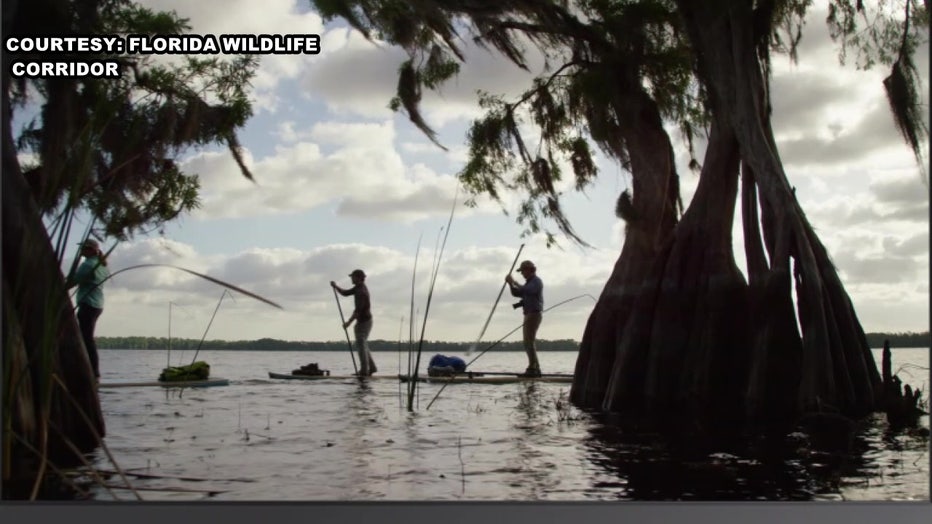Florida Wildlife Corridor documentary filmmaker’s dream of connecting state’s green space becoming a reality
TAMPA, Fla. - The new documentary on the Florida Wildlife Corridor lays out the environmental and economic benefits of a connected corridor of green space connected all parts of the state.
A prominent backer of the corridor says it’s become more than a dream that could happen sometime in the future.
"We’re seeing that progress now," said Carlton Ward, Jr. "The Department of Environmental Protection has already protected tens of thousands of acres."
Ward made the first Florida Wildlife Corridor film 10 years ago.
"And people definitely thought we were crazy on multiple fronts back then," he laughed.
In the years since then, the science has piled up on how wildlife would benefit from more expansive ranges. There would be more food and genetic diversity for species like the black bear and Florida panther. The film also shows how population centers are connected with the environment.
READ Lower Green Swamp is Hillsborough County's largest plot of wild Florida
"What we take for granted here in the Tampa Bay Area really is this geography that unites the entire state," admitted Mallory Lykes Dimmitt.

She uses the Green Swamp, northeast of Tampa as an example. It’s both a wildlife hub and one of the main sources of Tampa’s drinking water.
Dimmitt has worked to promote the corridor for more than a decade, and in recent years, helped convince state lawmakers of the need.
The big boost came last summer when the legislature passed, and the governor signed, the Florida Wildlife Corridor Act of 2021. It cleared the way for some $400 million to be spent on acquiring environmentally sensitive land.
READ Florida Senate removes 'worst of the worst' from waterways bill
"That gave me such a feeling of encouragement and hope that people, regardless of political affiliation, believe in the idea of a green future for Florida," he said.

Ward says if land can be saved faster than it's developed, agriculture and tourism will benefit. He says cities should grow up and not out to prevent urban sprawl.
"The unintended consequence of that sprawl is that we could develop from Tampa to Vero Beach and basically cut the state of Florida in half," says Ward.
Instead, he wants to bring the state together by connecting refuges, parks, preserves, private ranches, farms, and timberland to create a wildlife corridor. It once sounded crazy to some, but now, with leaders from both parties behind it, the corridor doesn’t seem so crazy.
LINK: Learn more about the documentary and how to watch it at https://video.wedu.org/video/saving-the-florida-wildlife-corridor-6atecl/.

